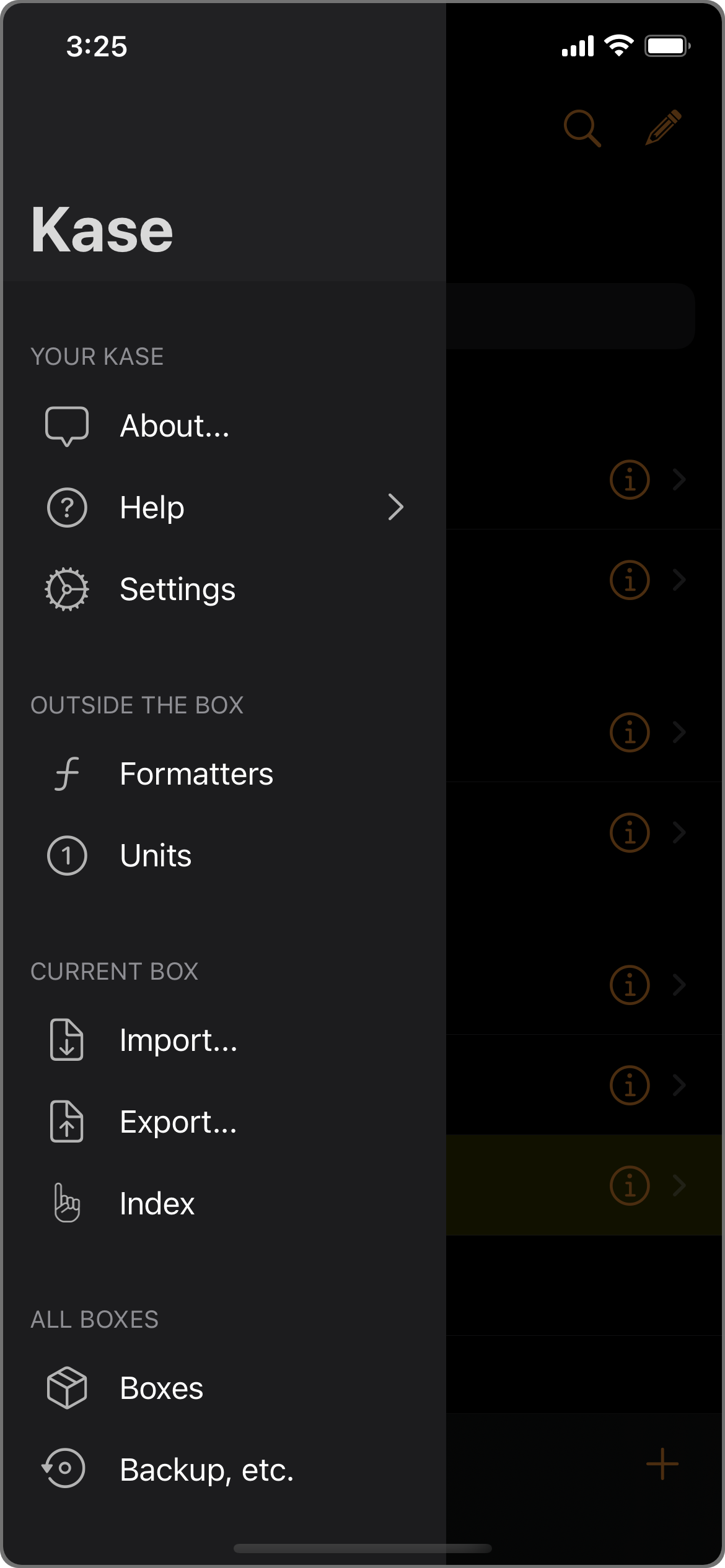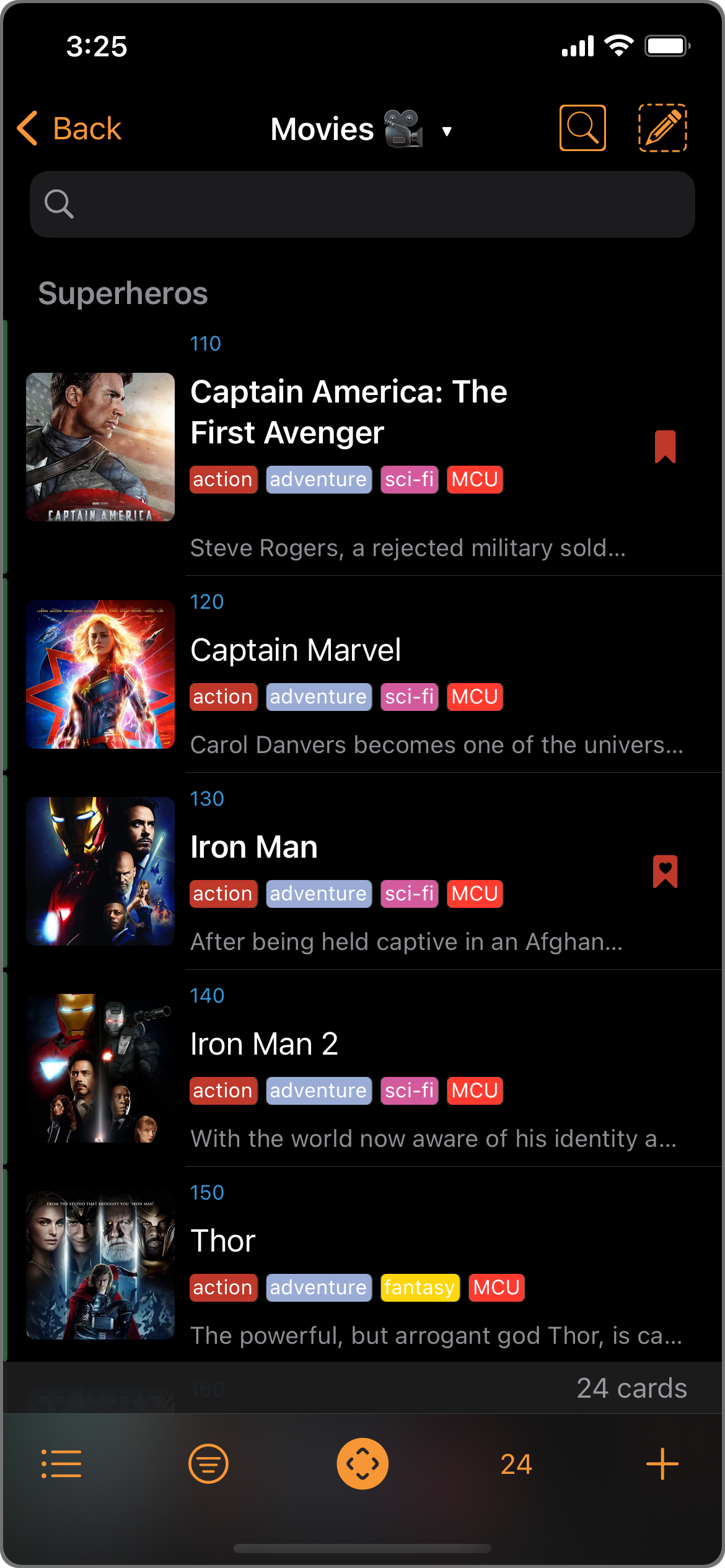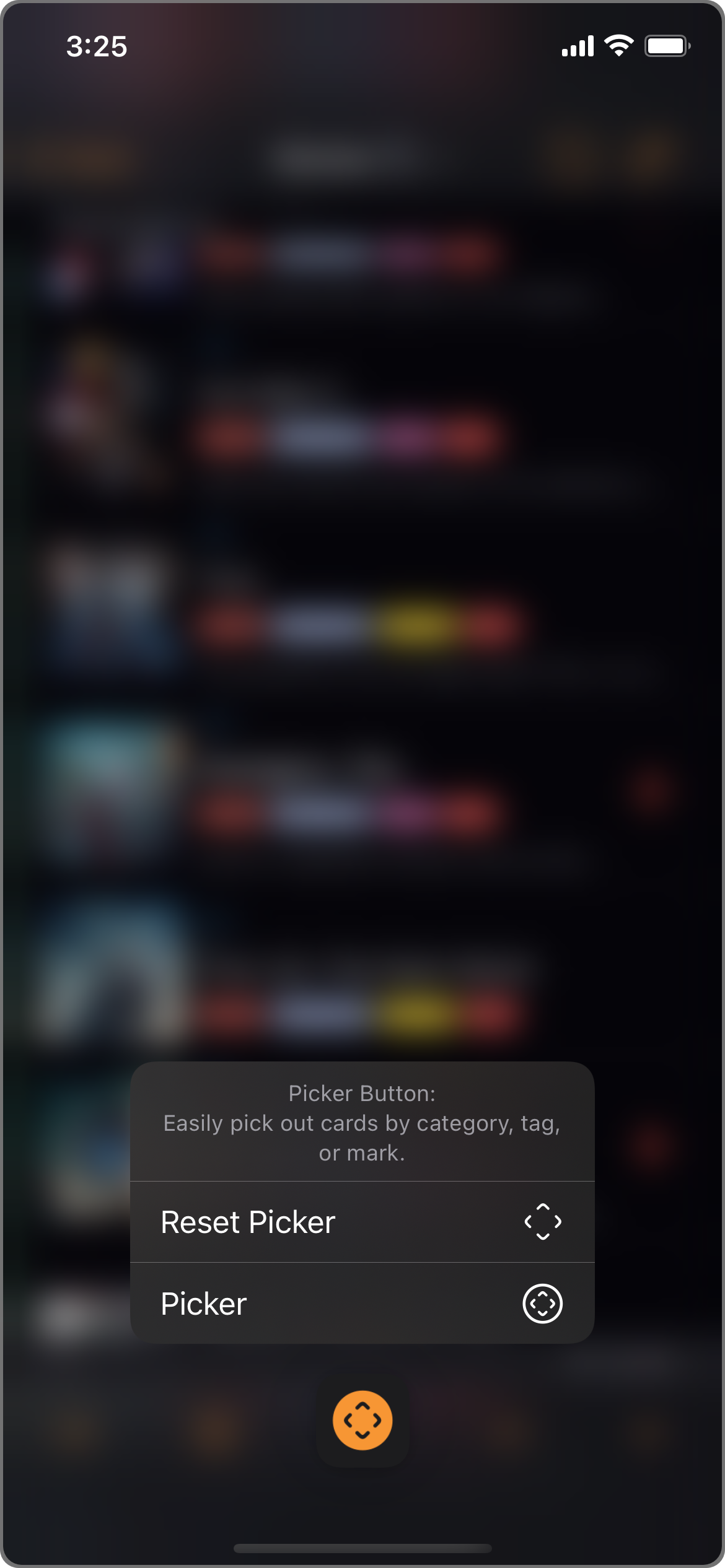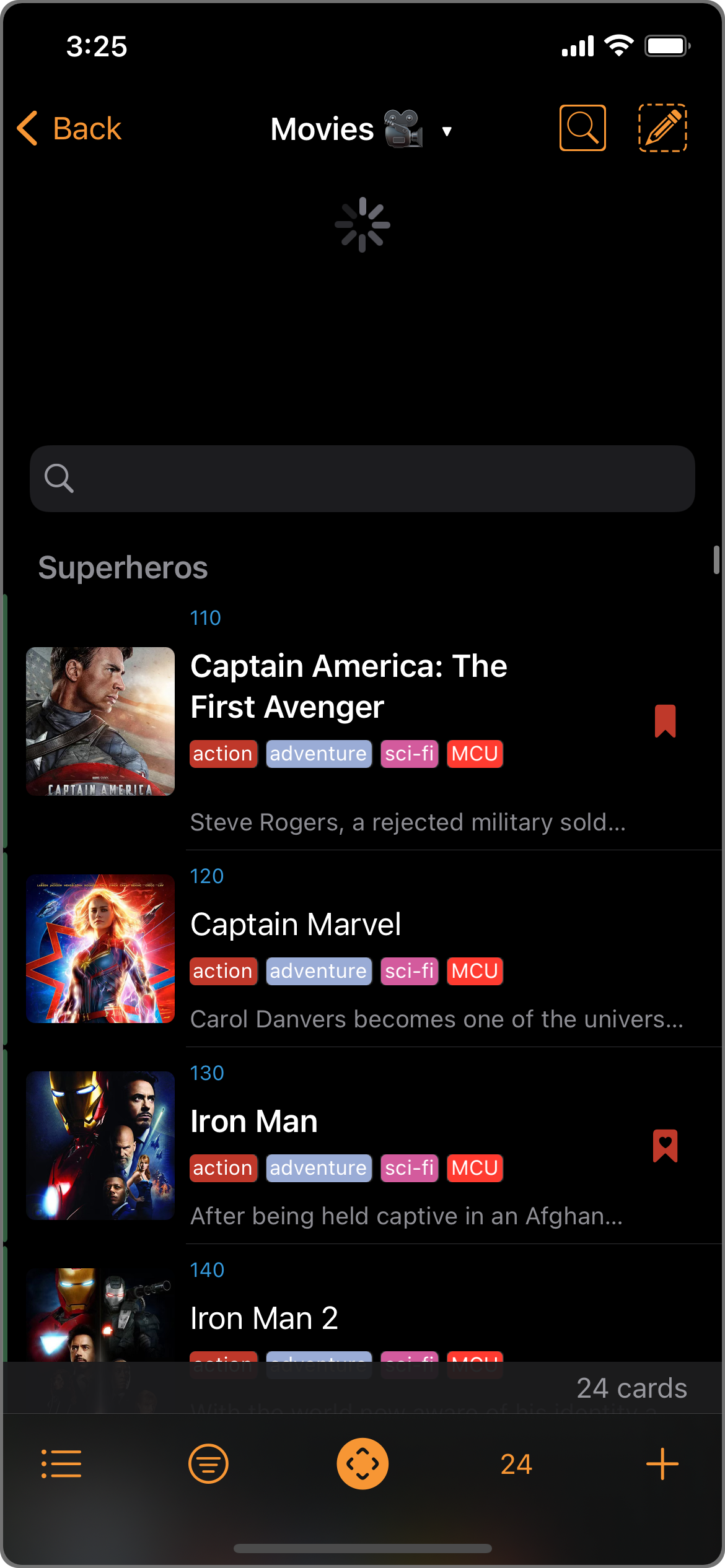Introduction to Kase
In addition to being the missing PIM (as suggested in the Welcome Tour), you can think of Kase as the missing database app in Apple's office suite (i.e. iWork).
| Apple iWork | Microsoft Office | |
|---|---|---|
| word processor | Pages | Word |
| spreadsheet | Numbers | Excel |
| presentation | Keynote | PowerPoint |
| database | ∅ | Access |
Kase is your personal data manager. It is simple, flexible, and it is relational. From a list of collectibles, to an expert system, or a knowledge base, you can build them with Kase.

Kase's Side Menu.
Design principles
Simple
Using Kase should be easy and intuitive. Designing a database with Kase, even a elaborate, powerful one with complex relationships, should just be the same once you understand the relational-linking principle.
Flexible
Kase should allow you to design any database to track anything important to you. It should support inheritance so that deck definitions can be shared and reused in multiple levels.
The UI should just be a window into your data, and it should look the way you want it to.
Relational
Not just a flat file, Kase should support relational linking, so you don't need to repeat or duplicate data. Interlinked data is an order of magnitude more useful.
Additionally, Kase should be:
-
Personal
Your data is yours. Kase should respect privacy, and you should never need to worry who can peek into your data.
-
Always Available
Your data should always be ready for you. High-speed wireless network should not be a prerequisite for accessing your own data.
Basic concepts
First, some basic concepts in Kase:
- Your Kase contains Boxes.
- Each Box stores Decks that can be related to each other.
- A Deck collects similarly structured Cards.
- And a Card is where you put data Entries.

A typical Deck of Cards window showing a list of Movie cards.
Terminology can be changed from "Deck of Cards" to "Collection of Items", or "Table of Records".
Common controls
Before you explore further, knowing these common controls will be helpful:
- If unsure, tap-and-hold on a button to see its context menu.

e.g. The Picker button's context menu.
- Pull down on the content to refresh.

e.g. Pulling down on the Deck of Cards content shows the refresh control.
Sidenote: Inspirations
Kase is insipired by...
- AppleWorks Database (for Apple II)
- ease of use, simplicity
- Superbase (for Amiga)
- GUI-based VCR-like browse controls
- relational capability
- ThinkDB (later as SmartList) (for PalmOS)
- mobile-sized, quick selections, and flexibility
but not so much by...
Bento(for Mac and iOS)- no real relationships
FileMaker(for Mac)- not user friendly, expensive
Microsoft Access(for Windows)- too many to list...
The year was 2014. It had been 7 years since the iPhone's debut. iOS 8 had just be announced. Yet we didn't have a decent personal database app. I got tired of waiting and started creating Kase. (At the time, it was called Dave.)